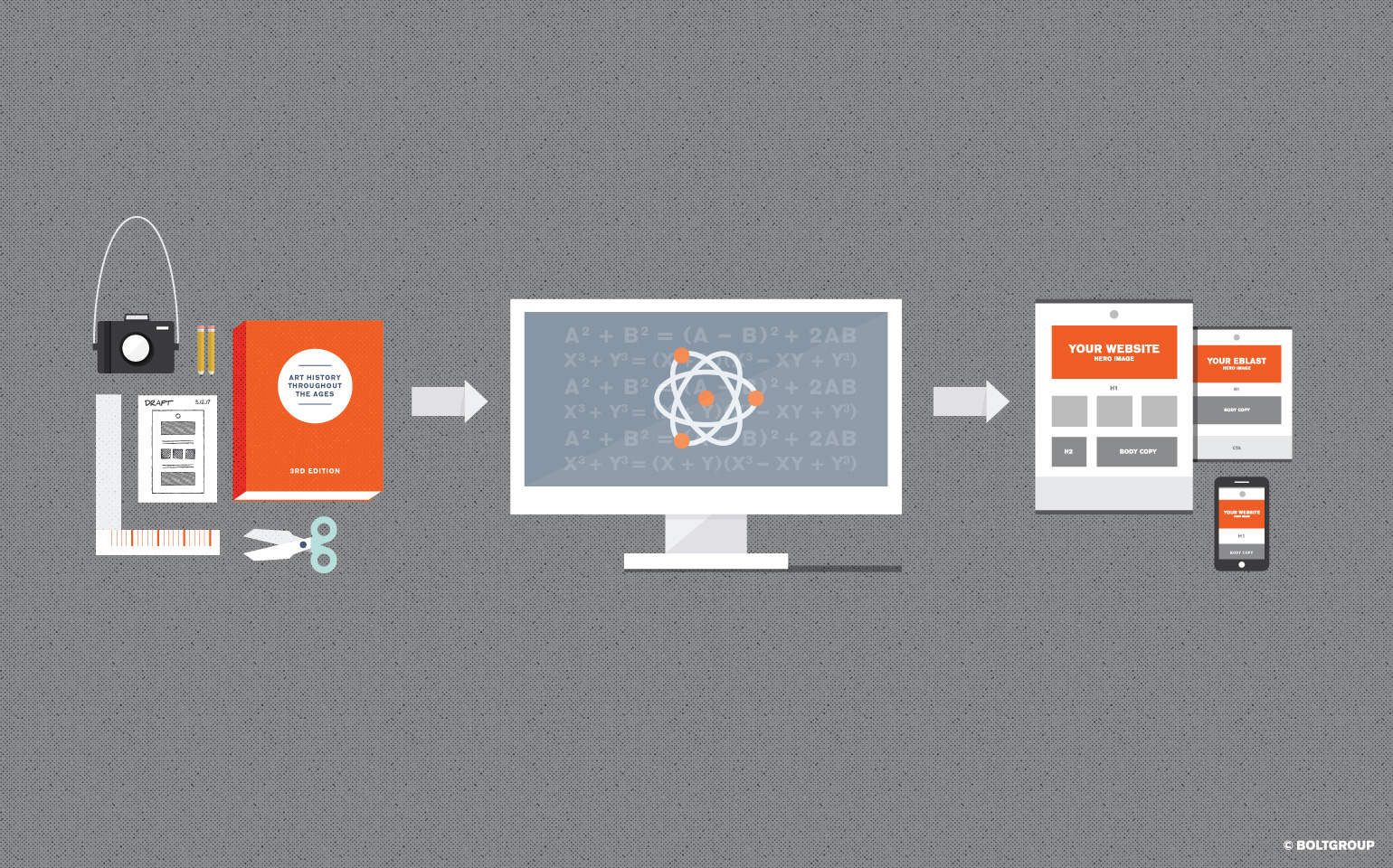Well before my years in this business, graphic design was created manually; Letraset and phototypesetting were the primary tools, and a lot of math was involved. Thanks to technological advancement, computers have replaced rulers, scissors, and pens. With a few clicks of the mouse and keyboard shortcuts, designs are packaged as PDFs to the printer, and Presto! your product is ready for distribution.
With Internet presence becoming more and more robust, consumers are inclined to shop for information and products online. No surprise, since companies answer this trend by favoring digital marketing over traditional methods.
So how does this affect graphic design? Established designers have trained themselves to think digitally; today’s graphic solutions must work for print and digital. Emerging designers grew up with the Internet, so their mindset is to design for digital first, print second. Regardless of the generation, most designers agree that modern graphic design has become cleaner and more utilitarian.
To the untrained eye, it seems like anyone who has access to Creative Cloud can slap a design together in Photoshop. True enough, they can slap something together—but will it be effective design? Little do these amateur designers know that true simplicity is still bound to the traditional principles of graphic design. That’s what makes the end product successful. Without it, the design falls apart and greatly compromises your visual brand identity. Below is a sampling of fundamental principles that are as solid today as when pen and paper were king.
Page Layout and Use of Grid
The grid is a golden rule in design that presents information in a fluid way. It optimizes the need for whitespace that gives packages like Harry’s razors, its calm, luxe feeling. The use of a grid helps to align imagery and text harmoniously so it doesn’t appear haphazard on a page. Farmer’s Horse Coffee in Boston, is a good example of effective grid use in packaging design and collateral materials. It all translates to digital design with the use of columns to keep content modular. Here are some good demonstrations of these principles on the web: Grand Ferdinand Hotel, AIGA Eye on Design, and Pluto Architecture.
Typography
Understanding type hierarchy and type pairings is crucial with utilitarian-type design. Typewolf is a great guide to what font pairings work well together. When establishing a visual brand identity, be sure the typefaces you select are available for web use. Sites such as Typekit and Typography make things even easier. Cascading Style Sheets (CSS) is a language used for describing the presentation of a document written in a markup language. CSS has become more and more sophisticated so that adjusting leading and kerning are easily possible through fine tuning line height and letter-spacing properties, respectively. This ensures a cohesive look to your print and digital products. It may be tempting to use funky fonts on your site; however, the principle of using three or fewer fonts streamlines your designs and makes coding less of a headache. Sans serif fonts are best used for body copy if your site is heavy on copy, while unique fonts are best for display text and headers.
Photography
Thanks to Instagram and the VSCO photo app, there’s been an analog photography revival. Photos are being manipulated to look like products of a film camera. The grain from traditional photography adds texture to digital designs. From a storytelling angle, these photos evoke a sense of heritage. Use this to your advantage when enhancing your brand personality.
Art History
Digital design is unquestionably huge and here to stay. Nonetheless, digital design is still heavily influenced by iconic art movements such as Constructivism, Bauhaus, and Postmodern Art. These periods challenged naturalism in favor of abstract shapes that were assembled in a structured fashion. In essence, they are the fathers of graphic design. You still see them continually referenced in web design. Studying the principles of each movement enhances the use of spatial design, color, and typography. There is never a time when we can’t learn from the Masters.
So, in the end, print design is not dead. It merely undergoes a continual evolution, drawing from yesterday, today, and tomorrow.
